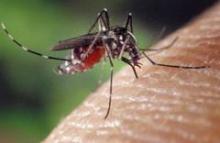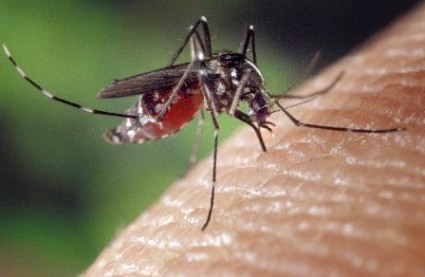User login
A Florida man is infected with the chikungunya virus and is the first locally acquired case of the mosquito-borne virus, the Centers for Disease Control and Prevention reported July 17.
"The arrival of chikungunya virus, first in the tropical Americas and now in the United States, underscores the risks posed by this and other exotic pathogens," Roger Nasci, Ph.D., chief of the CDC Arboviral Diseases Branch, Fort Collins, Colo., said in a statement.
The Florida Department of Health subsequently reported a second case.
Chikungunya is rarely fatal, but it can cause severe joint pain. Its initial symptoms include acute onset of fever, muscle ache, headache, joint swelling, and maculopapular rash, which can be difficult to identify in patients with dark skin. Patients recover in about a week, but long-term joint pain occurs in up to 20% of patients. Infection is thought to provide lifelong immunity, according to the CDC.
So far there are no approved vaccines or drugs, but research is ongoing in both areas, CDC officials said.
Scientists expect chikungunya to behave like the dengue virus in the United States, with imported cases resulting in sporadic local transmission without causing widespread outbreaks.
Federal leaders at the National Institute of Allergy and Infectious Diseases have called for public health measures such as effective mosquito control and advised physicians to be alert to signs and symptoms of the infection (N. Engl. J. Med. 2014 July 16 [doi:10.1056/NEJMp1408509]).
"We can only keep our fingers crossed – painful as that would be for many people infected with chikungunya – that the Caribbean epidemic will decline and the virus will depart from the Western Hemisphere, as it may have done nearly two centuries ago," Dr. David M. Morens and Dr. Anthony S. Fauci, both of the NIAID, wrote in the July 16 perspective piece.
Scientists believe that the virus emerged in Africa, arrived in Asia and the Americas more than 200 years ago, and caused outbreaks before disappearing from the Americas. But the virus re-emerged in late 2013 in the Caribbean, and so far this year there have been more than 120 cases in Puerto Rico and the U.S. Virgin Islands. More than 240 cases have been reported in travelers in the United States, according to the CDC, but none had been locally acquired until now.
Since 2006, the United States has had an average of 28 imported cases of chikungunya in travelers returning from countries where the virus is common.
The chikungunya virus is transmitted by Aedes aegypti and Aedes albopictus.
On Twitter @naseemmiller
A Florida man is infected with the chikungunya virus and is the first locally acquired case of the mosquito-borne virus, the Centers for Disease Control and Prevention reported July 17.
"The arrival of chikungunya virus, first in the tropical Americas and now in the United States, underscores the risks posed by this and other exotic pathogens," Roger Nasci, Ph.D., chief of the CDC Arboviral Diseases Branch, Fort Collins, Colo., said in a statement.
The Florida Department of Health subsequently reported a second case.
Chikungunya is rarely fatal, but it can cause severe joint pain. Its initial symptoms include acute onset of fever, muscle ache, headache, joint swelling, and maculopapular rash, which can be difficult to identify in patients with dark skin. Patients recover in about a week, but long-term joint pain occurs in up to 20% of patients. Infection is thought to provide lifelong immunity, according to the CDC.
So far there are no approved vaccines or drugs, but research is ongoing in both areas, CDC officials said.
Scientists expect chikungunya to behave like the dengue virus in the United States, with imported cases resulting in sporadic local transmission without causing widespread outbreaks.
Federal leaders at the National Institute of Allergy and Infectious Diseases have called for public health measures such as effective mosquito control and advised physicians to be alert to signs and symptoms of the infection (N. Engl. J. Med. 2014 July 16 [doi:10.1056/NEJMp1408509]).
"We can only keep our fingers crossed – painful as that would be for many people infected with chikungunya – that the Caribbean epidemic will decline and the virus will depart from the Western Hemisphere, as it may have done nearly two centuries ago," Dr. David M. Morens and Dr. Anthony S. Fauci, both of the NIAID, wrote in the July 16 perspective piece.
Scientists believe that the virus emerged in Africa, arrived in Asia and the Americas more than 200 years ago, and caused outbreaks before disappearing from the Americas. But the virus re-emerged in late 2013 in the Caribbean, and so far this year there have been more than 120 cases in Puerto Rico and the U.S. Virgin Islands. More than 240 cases have been reported in travelers in the United States, according to the CDC, but none had been locally acquired until now.
Since 2006, the United States has had an average of 28 imported cases of chikungunya in travelers returning from countries where the virus is common.
The chikungunya virus is transmitted by Aedes aegypti and Aedes albopictus.
On Twitter @naseemmiller
A Florida man is infected with the chikungunya virus and is the first locally acquired case of the mosquito-borne virus, the Centers for Disease Control and Prevention reported July 17.
"The arrival of chikungunya virus, first in the tropical Americas and now in the United States, underscores the risks posed by this and other exotic pathogens," Roger Nasci, Ph.D., chief of the CDC Arboviral Diseases Branch, Fort Collins, Colo., said in a statement.
The Florida Department of Health subsequently reported a second case.
Chikungunya is rarely fatal, but it can cause severe joint pain. Its initial symptoms include acute onset of fever, muscle ache, headache, joint swelling, and maculopapular rash, which can be difficult to identify in patients with dark skin. Patients recover in about a week, but long-term joint pain occurs in up to 20% of patients. Infection is thought to provide lifelong immunity, according to the CDC.
So far there are no approved vaccines or drugs, but research is ongoing in both areas, CDC officials said.
Scientists expect chikungunya to behave like the dengue virus in the United States, with imported cases resulting in sporadic local transmission without causing widespread outbreaks.
Federal leaders at the National Institute of Allergy and Infectious Diseases have called for public health measures such as effective mosquito control and advised physicians to be alert to signs and symptoms of the infection (N. Engl. J. Med. 2014 July 16 [doi:10.1056/NEJMp1408509]).
"We can only keep our fingers crossed – painful as that would be for many people infected with chikungunya – that the Caribbean epidemic will decline and the virus will depart from the Western Hemisphere, as it may have done nearly two centuries ago," Dr. David M. Morens and Dr. Anthony S. Fauci, both of the NIAID, wrote in the July 16 perspective piece.
Scientists believe that the virus emerged in Africa, arrived in Asia and the Americas more than 200 years ago, and caused outbreaks before disappearing from the Americas. But the virus re-emerged in late 2013 in the Caribbean, and so far this year there have been more than 120 cases in Puerto Rico and the U.S. Virgin Islands. More than 240 cases have been reported in travelers in the United States, according to the CDC, but none had been locally acquired until now.
Since 2006, the United States has had an average of 28 imported cases of chikungunya in travelers returning from countries where the virus is common.
The chikungunya virus is transmitted by Aedes aegypti and Aedes albopictus.
On Twitter @naseemmiller

